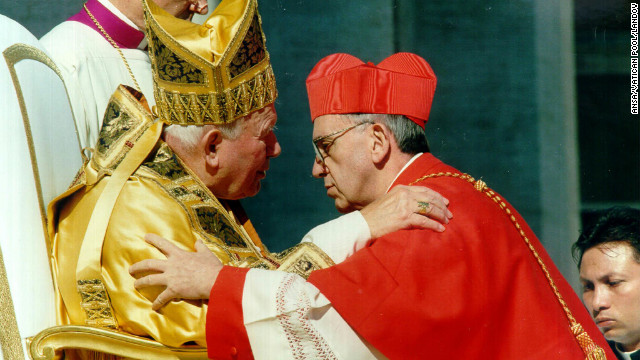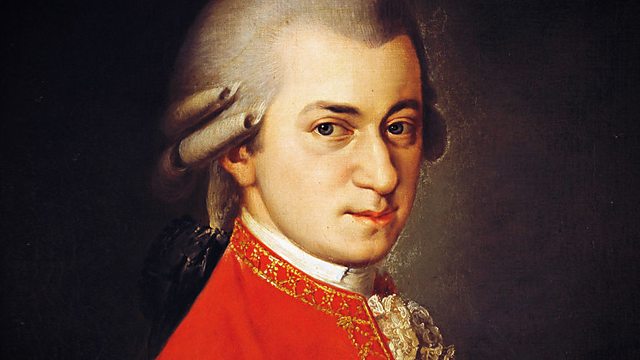Wolfgang Amadeus Mozart
Friday, March 1, 2013
0
comments
{[["☆","★"]]}

From the age of seven, Mozart spent much of his
childhood on tour, paraded by his father before potential patrons,
academics and professional musicians. Between June 1763, five months
after his seventh birthday, and November 1766, the Mozart family visited
no less than ten German cities, as well as Brussels, Paris (where they
dined with Louis XV at Versailles) and London. After a year in England,
they returned home via Holland, Paris and Switzerland to Salzburg. But
they would not stop for long. After barely a year at home, they returned
to the road again, this time journeying to Vienna (where both children
caught smallpox), Olmuc and Brno, returning home in January 1769. Mozart
was just 13 years old.
Not much of a childhood, really: a
non-existent home life; constantly writing or performing in different
places; threatened with, and as often as not, succumbing to illness;
constantly on display; always in the company of adults. But what did it
do for Mozart and his music?
Before setting off on his first tour,
Mozart had already laid the firm foundations of his technique, learning
from the collections of more than 100 keyboard works, mostly by North
German composers such as Telemann and CPE Bach, that his father had
gathered for him and his sister, Nannerl, to study. It’s no surprise,
then, that Mozart’s earliest works show their influence and North German
seriousness would become an important feature of his mature style, such
as in the slow movement of his Sinfonia Concertante for violin, viola
and orchestra (1779) – an unquestionable masterpiece of the classical
canon.
But it was during his visit to London that the
eight-year-old Mozart met Johann Sebastian’s youngest son Johann
Christian, with whom he would form a life-long friendship. JC Bach had
spent much of his earlier life in Italy, mastering the Italian style,
and had since established himself in London with a successful series of
concerts at the fashionable Vauxhall Gardens. His Italianate style made a
profound impact on Mozart who modelled his first three symphonies on
those of Bach and his business-partner, Carl Friedrich Abel. Mozart also
arranged three of Bach’s Op. 5 keyboard sonatas as Piano Concertos
(KV107). Indeed, Bach’s ‘singing allegros’ can be heard in many of
Mozart’s most characteristic first movements and finales, most
triumphantly in the finale of the Jupiter Symphony No. 41 (1788).
Mozart’s travels made him a great mimic of men and music. By the age of 13, he had already composed a little one-act opera, Bastien and Bastienne,
modelled on the sort of French comic operas he had heard in Paris. It
was the seed from which Mozart grew his ambition to create German opera,
later realised with Die Entführung aus dem Serail (1782) and Die Zauberflöte
(1791). To hone his operatic skills and establish his reputation,
Mozart visited Italy three times between 1769 and 1773, performing in
Rovereto, Verona, Mantua and Milan, where he met composer Niccolò
Piccinni and was commissioned to write his opera seria, Mitridate.
Few
modern-day tourists have seen as much of Italy as the teenage Mozart.
From Milan he journeyed to Lodi where he produced his first string
quartet, and then to Parma, Bologna and Florence where he became
friendly with just about the only child he ever had dealings with as an
equal – the English composer Thomas Linley the younger. For Easter,
Mozart was in Rome, where he famously broke the Papal decree against
publishing Allegri’s Miserere by memorising it after hearing it
at St Peter’s and later writing it down. In May, Mozart visited Naples
where he met composer Niccolò Jommelli and the English historian,
Charles Burney. Returning via Rome, where he was knighted by the Pope,
he visited Bologna, taking lessons from the great contrapuntist, Father
Martini. The lessons proved beneficial and, after passing a gruelling
test in counterpoint, Mozart was elected a member of the prestigious
Philharmonic Society. His style would combine contrapuntal rigour with
Italian suavity, to be exploited as and when occasion demanded: for
church, stage or concert hall.
If Mozart’s first tour of Italy was
an outstanding success, France, to which he and his mother journeyed in
September 1777, was an unmitigated disaster. Indeed, the summer of ’78
in Paris proved to be one of the saddest in Mozart’s short life: the
young composer was forced to fend for himself when his mother died.
Neither a businessman, nor any longer a child prodigy, he struggled to
survive.
Of the few commissions that came his way, some were
unpaid, others unperformed. In recompense for non-performance of a
Sinfonia Concertante for four wind instruments and orchestra, however,
he received a commission for a Symphony (Paris, No. 31) – his one
success. Embittered and frustrated, he wrote to his father: ‘Whether it
will please, I do not know, and to tell the truth I care very little. I
guarantee that it will please the few intelligent French people
present... as for the stupid ones – I see no great misfortune in not
pleasing them…’
After returning home, it was not
long before Mozart moved to Vienna, married and cut down on his travels.
Still, in the last ten years of his life he seemed restless and
continued to move from house to house. Could it be that, raised against a
backdrop of ever-changing scenery, Mozart perhaps needed disruption in
order to compose? Certainly there is an identifiable sense of
restlessness in his music – the modulations in the development of the Jupiter
Symphony (No. 41), for example, that give rise to changing moods,
shifting like the shadows of clouds across its musical landscape. In
this sense, Mozart’s music not only speaks of the joys of existence, but
also of the impossibility of peace.
THANK YOU FOR YOUR VISIT, PLEASE COME BACK SOON...
Title: Wolfgang Amadeus Mozart
Written By Kristofani
Hopefully this article useful to you. If you wish to quote either part or all of the contents of this article, please include dofollow links to http://kristianporung.blogspot.com/2013/03/wolfgang-amadeus-mozart.html. Thank you for reading this article.Written By Kristofani





















0 comments:
Post a Comment